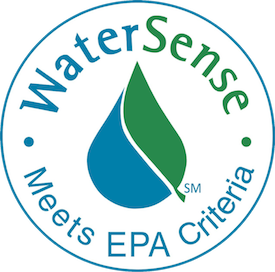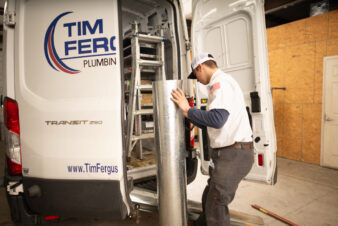 It appears we are right back to this battle again. EPA’s WaterSense is in peril once again. The federal government has announced budget cuts for the U.S. Environmental Protection Agency’s (EPA) in 2019, and one that could be eliminated is WaterSense, a voluntary partnership program to label water-efficient products as a resource for helping to reduce water use. The $6.1 billion proposal represents a 23% cut from the EPA’s 2018 budget and once again includes elimination of EPA’s WaterSense program.
It appears we are right back to this battle again. EPA’s WaterSense is in peril once again. The federal government has announced budget cuts for the U.S. Environmental Protection Agency’s (EPA) in 2019, and one that could be eliminated is WaterSense, a voluntary partnership program to label water-efficient products as a resource for helping to reduce water use. The $6.1 billion proposal represents a 23% cut from the EPA’s 2018 budget and once again includes elimination of EPA’s WaterSense program.
The fact is, as a result of the WaterSense program, businesses have developed more than 21,000 models of WaterSense-labeled products for bathrooms (showerheads, faucets, and urinals, in addition to toilets), commercial kitchens, and irrigation systems.
In addition, an American Water Works Association 2016 survey of water utilities found that 72% of utilities recognize that the WaterSense program is critical to their commercial, industrial, and institutional water conservation efforts, and 86% of utilities consider conserved water as one of their water supply alternatives.
Nevertheless, the WaterSense continues to carry the target of budget cuts, and, according to the PHCC National Association, the Administration has proposed spending cuts to the EPA budget by nearly a quarter for fiscal year 2019. The reduction slashes funding for a myriad of activities, including research and state programs.
According to Dain Hansen, vice president of Government Relations, The IAPMO Group, the White House is seeking to cut more than $2.5 billion from the annual budget of the Environmental Protection Agency—an overall reduction of more than 23%. The fiscal 2019 proposal marks the Trump administration’s latest attempt to shrink the reach of an agency the president once promised to reduce to “little tidbits.” The EPA already has lost hundreds of employees to buyouts and retirements over the past year, and its staffing is now at Reagan-era levels, conveys Hansen. Under the latest budget, the agency would continue to shrink in size, leaving much more of the work of environmental protection to individual states. The administration’s plan would cut several dozen programs altogether.
Hansen says that an industry letter is being circulated for signatures to save the widely-supported WaterSense program. In the letter it stated that economic and social benefits of the WaterSense program far outweigh its $3 million budget by helping families and businesses of all sizes to reduce utility bills and to conserve water. It is an independent and trusted resource for local policymakers in determining how to best to allocate water resources in their communities.
More benefits:
• In 2015, more than 50% of all tank – type toilets entering the market complied with WaterSense specifications.
• Today, all toilets, faucets , and showers sold in The Ho me Depot stores are WaterSense-labeled. Last year, The Home Depot offered more than $43.8 million in product markdowns of WaterSense-labeled products to encourage homeowners to switch out their older, less efficient devices. The retailer also partnered with utilities to make more than 350 local utility rebates available to its customers. This included a statewide campaign in drought-stricken California to provide $100 incentives for WaterSense-labeled toilets.
• KB Homes constructs homes optimized for water conservation , particularly in water-challenged regions. Cumulatively, KB Homes’ WaterSense-labeled homes and installation of water-efficient features save an estimated 3 million gallons of water daily, compared with typical existing homes that do not have the same water-saving items.
• The WaterSense website lists 130 different rebates being offered by local water authorities, utilities, and city governments to encourage the utilization of WaterSense-labeled products. Because of the value of WaterSense to their business, their employees, and their customers, more than 1,700 manufacturers, water and energy utilities, distributors, state and local governments, non-profit organizations, trade associations, and retailers nationwide have partnered with the program.
• A 2017 EPA Inspector General report confirmed that EPA has the authority to operate the WaterSense program using authorities granted it by the Clean Water Act and Safe Drinking Water Act. The report also found that WaterSense is a “well-designed and managed program” and that it resulted in “consumer and industry confidence in WaterSense-labeled products, broad stakeholder support, and returns on investment.” The report further found that the program had “controls in place to ensure that the water and energy savings it calculated were reasonable.”
Food for thought. Did you know—a single medium to long-range subsonic Tomahawk cruise missile costs roughly $1.5 million? Tell me, why does the federal government need to cut WaterSense Program again?




Join the conversation: